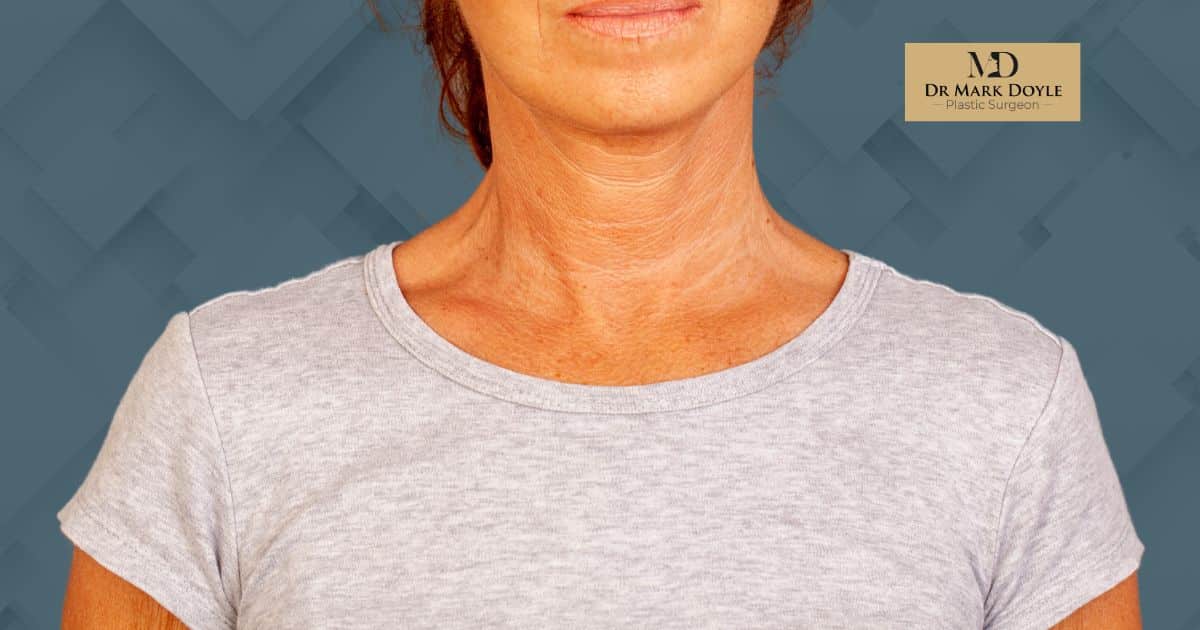Neck lines, also known as neck wrinkles or neck creases, refer to the visible lines that appear on the neck as a natural part of the ageing process. The skin on the neck is thinner and more delicate than on the face. It is more susceptible to signs of ageing like fine lines, creases, and loss of neck elasticity leading to a sagging neck.
Maintaining a youthful and smooth neck is crucial for many individuals as the neck is often a noticeable area. For individuals concerned about neck aging, a neck lift procedure can be a potential solution. A neck lift is a surgical procedure that addresses excess skin, fat, and muscle laxity in the neck region. This procedure aims to tighten and contour the neck, effectively reducing the appearance of lines on neck and sagging skin.
However, it’s essential to consult with an experienced plastic surgeon to determine if a neck lift is an appropriate option for you. Additionally, you can consider non-surgical depending on the severity of the neck lines.
Guide to Facial Rejuvenation
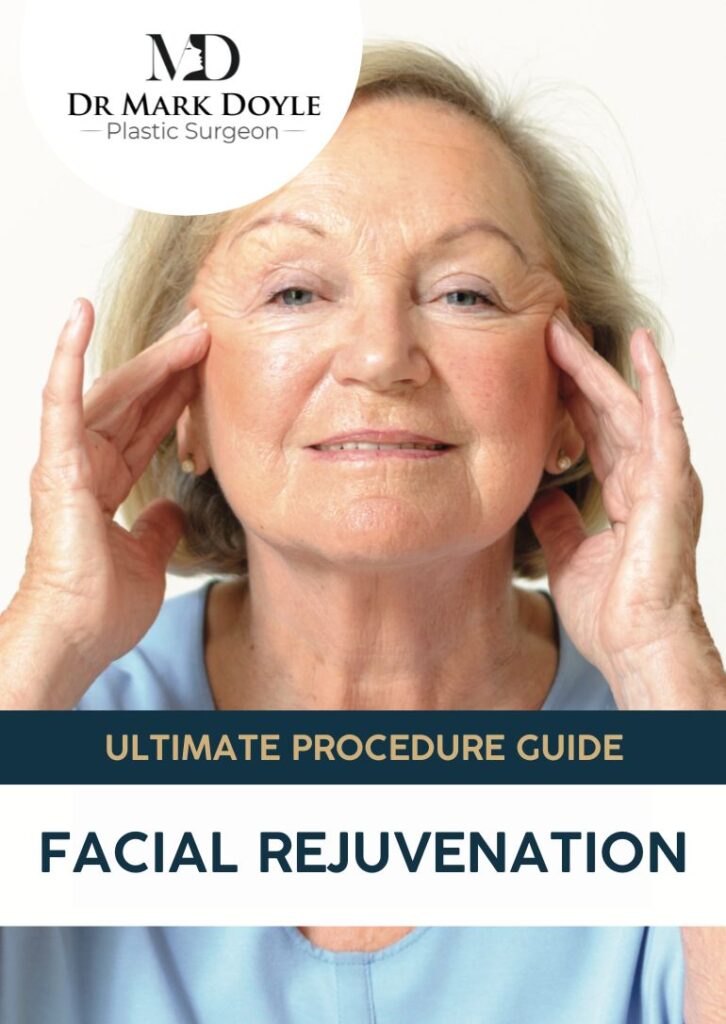
Facial Rejuvenation
What are Neck Lines?
Neck lines are visible creases and wrinkles that appear on the neck area. These lines can vary in severity and texture, ranging from fine lines to deeper creases.
Neck lines can affect everyone as they age the skin naturally undergoes changes, losing collagen and elasticity.
The decreased production of collagen and elastin, coupled with external factors, leads to the formation of neck lines. Additionally, the skin on the neck is particularly susceptible to these changes due to its constant exposure to environmental factors like sun damage.
Understanding the causes of neck lines is crucial for developing effective strategies to address and prevent them.
Neck Lines Causes
The primary neck line causes stem from ageing, sun damage, genetics, and lifestyle choices, which we will discuss below.
Ageing
As we age, the body’s production of collagen and elastin decreases. Collagen is responsible for maintaining the skin’s firmness, while elastin allows the skin to snap back into place after stretching. With the reduced production of these proteins, the skin’s smoothness and elasticity decreased.
Additionally, the breakdown of the supportive structures in the skin, such as fibrous and connective tissues, also contribute to the formation of neck lines. As these structures weaken, the skin loses its ability to resist the effects of gravity. This results in sagging and the appearance of wrinkles.
While natural ageing is inevitable, various preventive measures, such as adopting a good skincare routine, staying hydrated, and maintaining a healthy lifestyle, can help slow down the signs of aging.
Sun Damage
Sun damage is one of the largest factors of ageing including neck lines. Prolonged and unprotected exposure to ultraviolet (UV) rays leads to various harmful effects on the skin, particularly on the neck, which is often exposed to sunlight. UV rays penetrate the skin and cause damage to the collagen and elastin fibres, breaking them down over time.
By taking precautions, individuals can help maintain the health and youthful appearance of their neck and skin in general. To protect the skin from sun damage and reduce the risk of necklines, it’s crucial to:
- Wear protective clothing
- Use a broad-spectrum sunscreen with a high SPF
- Seek shade during peak sunlight hours
- Wear sunglasses to shield the delicate skin and prevent squinting
Genetics
Genetics significantly determine how our skin ages and the likelihood of developing neck lines. The way your skin responds to external factors, and its ability to repair itself, can be influenced by your genetic makeup.
If a person’s family has a history of developing neck lines or other signs of ageing in the neck area, it may increase the likelihood of that person experiencing similar patterns. This means some individuals may be genetically predisposed to develop neck lines earlier or more prominently than others.
However, it’s essential to remember that genetics is just one of many factors contributing to ageing. While we cannot change our genetics, being aware of family history can help individuals take proactive measures to minimise the appearance of neck lines through a combination of good skincare practices, sun protection, a healthy lifestyle, and potentially seeking cosmetic treatments if desired.
Lifestyle Factors

Lifestyle factors can significantly contribute to the development of neck lines.
Smoking: Smoking has numerous harmful effects on the skin, including accelerated aging. Smoking can cause your skin to age faster than sun exposure. Cigarettes contain harmful chemicals that damage collagen and elastin, making it more prone to sagging and the development of wrinkles.
Repetitive Neck Movements: The skin on the neck is relatively thin and delicate, and constant repetitive movements can lead to the formation of neck lines. Certain habits can put stress on the skin and contribute to the development of creases, such as:
- Neck posture
- Constantly looking down at a phone or computer screen
- Sleeping in certain positions
- Engaging in repetitive neck motions during work physical activities
By making positive lifestyle choices, such as quitting smoking and being mindful of repetitive neck movements, you can potentially slow down the development of neck lines. Additionally, adopting a healthy lifestyle that includes a balanced diet, regular exercise, and proper skincare can also contribute to maintaining the skin’s overall health and youthfulness.
Types of Neck Lines
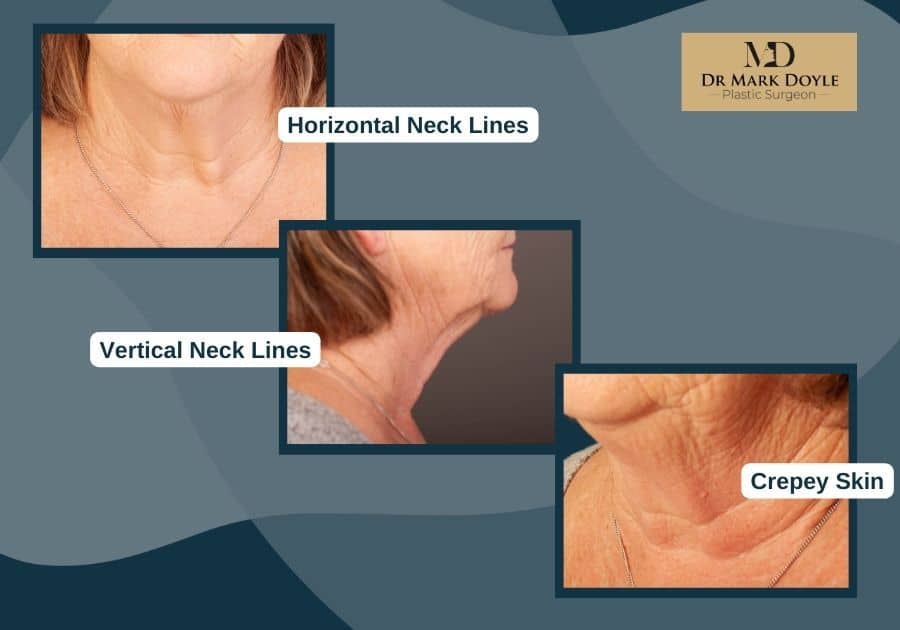
The appearance of neck lines can vary from person to person, and understanding the different types of neck lines is crucial for determining the most effective treatment approach. Here, we will discuss three common types of neck lines.
Horizontal Neck Lines
Horizontal neck lines, also known as necklace lines or neck wrinkles, run horizontally across the neck and become more prominent with age.
They are caused by a combination of factors, including:
- The natural loss of collagen and elastin
- Repetitive neck movements
- Sun damage
Treatment options include non-surgical approaches like:
- Topical creams and serums
- Platelet Rich Plasma PRP Therapy
- Skin Boosters
- Anti-wrinkle Injections
- LED Light Therapy
In some cases, neck tightening surgery may be recommended to remove excess skin and tighten underlying muscles.
Vertical Neck Bands
Vertical neck bands, also known as platysmal bands, are pronounced lines or bands that extend from the base of the neck to the chin. These bands are caused by the weakening and separation of the neck muscles known as the platysma muscles.
Anti-wrinkle injections are a viable option for platysmal bands treatment. The injectables relax muscle activity and soften the appearance of platysmal bands. The neck band treatment results in a reduction in the visibility of vertical neck lines.
Crepey Skin Neck Lines
Crepey skin refers to thin, wrinkled skin that resembles the texture of crepe paper. It commonly affects the neck area, where the skin is naturally thinner and more prone to the effects of ageing.
Non-surgical options for addressing crepey skin can include the use of topical creams containing retinol, chemical peels and microdermabrasion. These neck treatments can promote skin renewal by removing the outer layer of dead skin cells, encouraging the growth of new, healthier skin.
For more severe cases of crepey skin, cosmetic procedures may be recommended to achieve more significant tightening. The objective of these treatments is to improve the appearance of crepey skin by tightening the affected area for a smoother appearance.
Neck Renewal Treatments
Neck Lift Procedure
Many wonder how to get rid of neck lines and how to tighten neck skin. In some cases, neck plastic surgery is used to tighten platysma muscles, and remove excess neck fat. This neck tightening treatment involves incisions made behind the ears and under the chin, the neck skin is then lifted and repositioned.
With this neck renewal you can expect a reduction in sagging skin and wrinkles. This results in the neck skin tightening, promoting a smoother and more defined neck contouring.
The typical recovery process may include swelling, bruising, mild discomfort, and wearing a compression garment. You’ll need time to rest and can return to regular activities within a few weeks.
Neck Liposuction
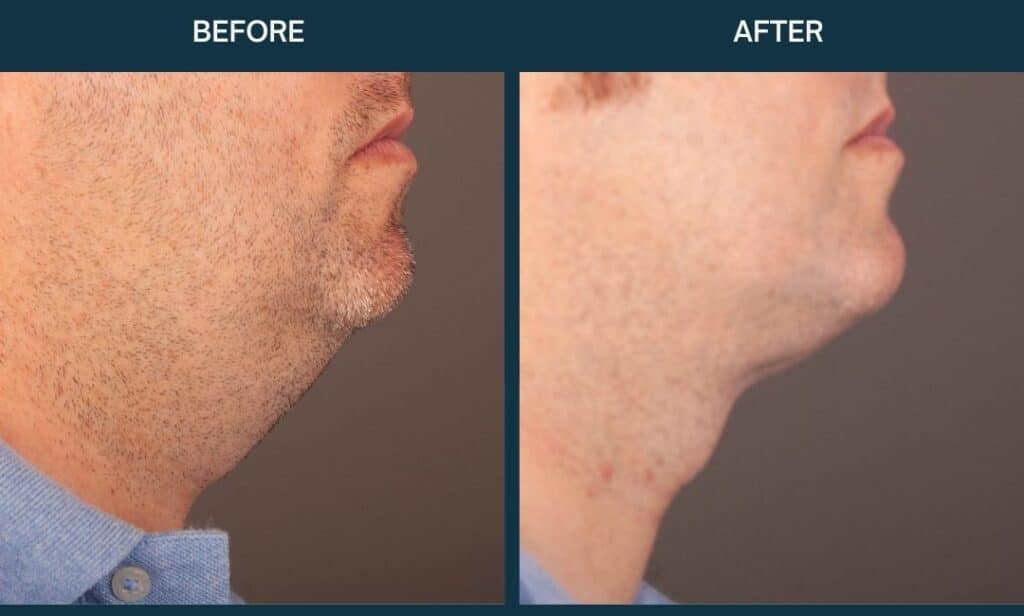
Neck liposuction can be used as a loose neck skin treatment. This is a surgical procedure which removes excess fat from the neck area.
During the procedure, the surgeon makes small incisions and uses a thin tube called a cannula to suction out excess fat. This is a relatively straightforward process, performed under general anaesthesia with a short recovery period.
Some of the benefits following this procedure can include:
- A more defined jawline
- An improved neck profile
- A reduction in a double chin or fatty neck appearance.
Platysmal Bands Treatment
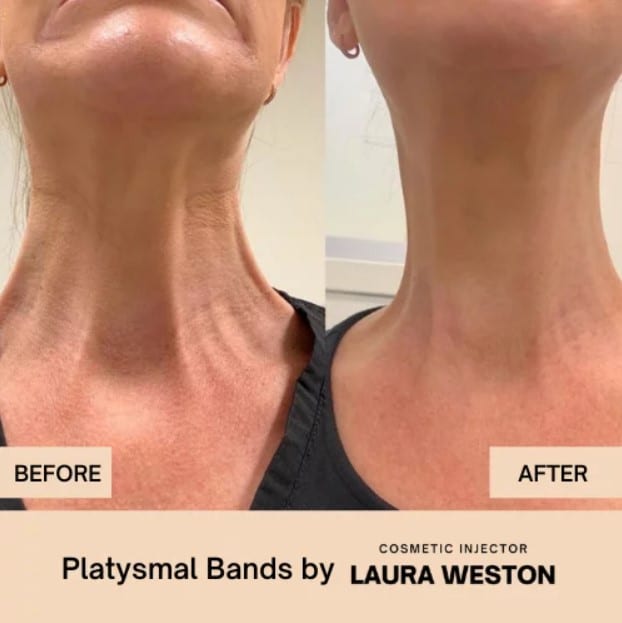
Strategically injecting anti-wrinkle injections into the neck relaxes the neck muscles and reduces the appearance of bands, resulting in fewer visible vertical lines on the neck.
This is a non-surgical option with a short treatment time of only about 15 minutes. Afterwards, there is minimal downtime and a noticeable improvement in neck lines within 2 weeks when the injectables have fully taken effect.
Aftercare and Maintenance
Aftercare and maintenance are crucial for both surgical and non-surgical treatments to ensure optimal results and a smooth recovery. These specific aftercare instructions may vary depending on the procedure and individual circumstances.
Here are some general guidelines to address common concerns like swelling, bruising, and discomfort.
- Applying cold compresses to the treated area for short intervals to help reduce swelling.
- Avoid touching or massaging the treated area unless instructed otherwise.
- Protect your skin from the sun.
- Stay hydrated and maintain a well-balanced diet to aid in healing.
- Attend follow-up appointments as recommended to monitor your progress.
- Take prescribed pain medications to manage discomfort during the recovery period.
- Refrain from engaging in strenuous activities or heavy lifting.
- Follow your surgeon’s guidelines for scar care.
- Avoid smoking and alcohol which can hinder the healing process.
Remember, every individual’s healing process is unique, so always follow your specific aftercare instructions for the best results and a smooth recovery.
Long-Term Maintenance
Maintaining the results of treatments and prolonging their effects require consistent care and attention. A few ways to maintain results include following a consistent skincare routine, keeping good neck hydration and protecting your skin from the sun.
Schedule periodic consultations with your healthcare provider to assess the longevity of your results and discuss any adjustments or additional treatments that may be necessary.
While injectables are not permanent solutions so you’ll need to follow the recommended schedule for touch-up treatments or adjustments to maintain the desired results.
FAQs
What is the relationship between turkey neck and neck lines, and how can they be treated?
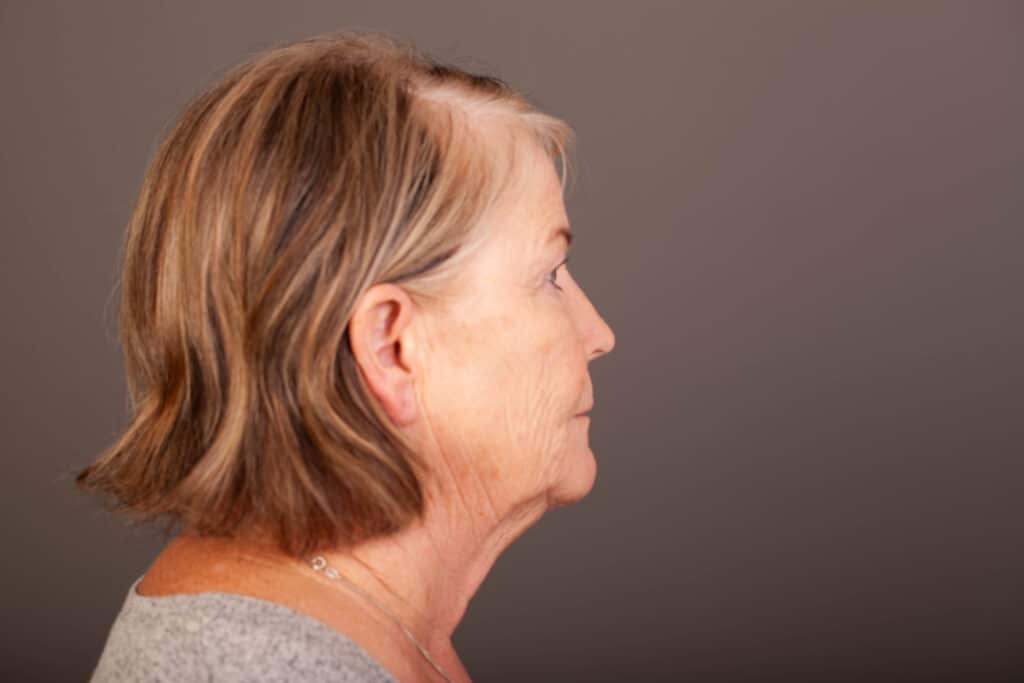
The aging process typically intertwines turkey neck and neck lines, as these two conditions frequently coexist. So the main culprits behind both issues are the natural aging of the skin, the loss of collagen, and the effects of gravity.
Turkey neck is a term used to describe the appearance of loose skin on neck and sagging skin fat that droops down from the neck. The accumulation of fat can cause the skin to sag, resulting in the appearance of a “turkey neck.” Also, a loose neck skin after weight loss is another common occurrence.
Neck lines refer to visible creases and wrinkles that form on the neck due to a combination of factors. As the skin ages, it loses collagen and elastin, the proteins responsible for skin firmness and elasticity. This, combined with the constant movement of the neck and exposure to environmental stressors, can lead to the development of neck lines.
Removing excess skin using neck lift surgery will remove excess neck skin as well as skin tightening on neck, helping to reduce the appearance of both turkey neck and neck lines.
How long is the recovery period after a neck lift procedure?
Recovery from face and neck lift involves about 4 weeks, with one week off work. During this period will there will be some swelling and bruising. It’s important to take lots of rest and stay out of the sun.
Can weight loss help reduce the appearance of a double chin and neck lines?
Yes, a double chin can be reduced by decreasing your overall body fat through diet and exercise.
Some double chin exercises can help to tone the muscles under your chin. As a result, they may eventually help reduce the appearance of a double chin.
Contact Us
Dr Mark Doyle has over thirty years of experience and can help to answer any questions you may have about neck lines. You can book a consultation to discuss your goals.
About Dr Mark Doyle FRACS (Plast) – Specialist Plastic Surgeon
Dr Mark Doyle is a Specialist Plastic Surgeon with over thirty years of experience. He specialises in face lift surgery in Gold Coast and Brisbane, and also offers a range of body and breast procedures.
Dr Doyle is a fully qualified Doctor and surgeon. He has completed all required training to be a Specialist Plastic Surgeon and is driven by an committed to providing excellent standards of care.
NEXT STEPS
Do Your Research
- Read the Website and Blogs relevant to your procedure
- Read our Frequently Asked Questions
- Learn about the Risks and Complications of Surgery
- Download our Plastic Surgery Guides
- Browse Dr Doyle’s YouTube Channel
What to Bring to Your Plastic Surgeon Consultation
- Bring a friend or relative for support and discussion regarding your choices
- Take notes and read all provided information thoroughly
- Read about what to expect in your Initial Surgery Consultation
Book Your Plastic Surgery Consultation
- Get a Referral from your GP or specialist – this is required to book a consultation with Dr. Doyle.
- Email us or call on 07 5598 0988 to arrange your consultation appointment.
- Pay your $285 Consultation Fee in advance to secure your consultation.
Please contact us to arrange to book a consultation with our Specialist Plastic Surgeon or to speak with our Patient Care Advisor.
Send an enquiry form today or phone 07 5598 0988 during Clinic Hours.
–
*DISCLAIMER: All information on Dr Mark Doyle website is general and is not intended to be medical advice nor does it constitute a doctor-patient relationship. Results can vary significantly and depend on individual patient circumstances. All images on this website, unless specified as real patient images, are stock images used for illustrative purposes only. Surgery risks and complications will be covered in detail during a consultation with your surgeon. Book a consult for details regarding your cosmetic surgery procedure.
Dr. Mark Doyle AHPRA Registration: Dr Mark Doyle MED0001375519 Specialist Plastic Surgery – MBBS FRACS FRCS


